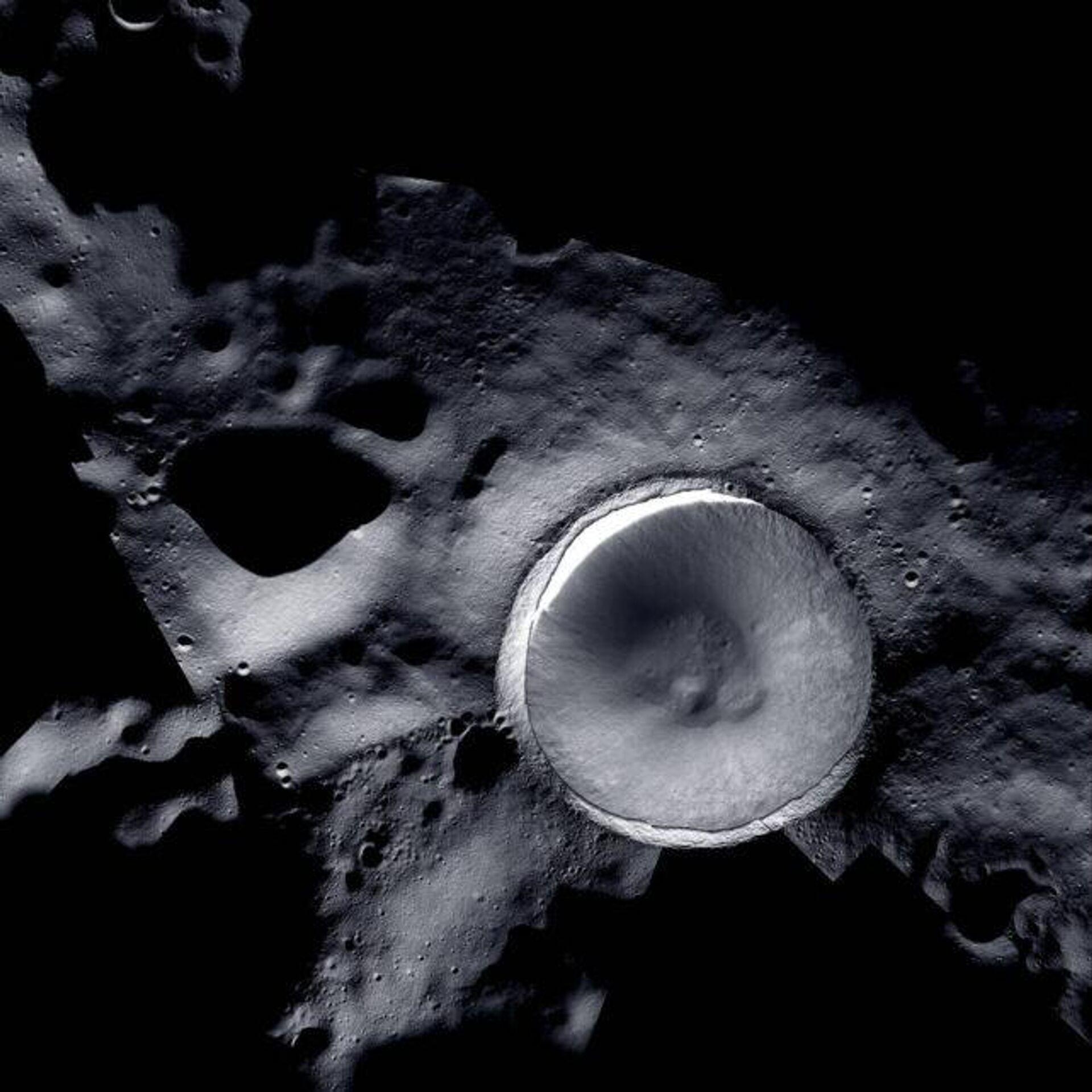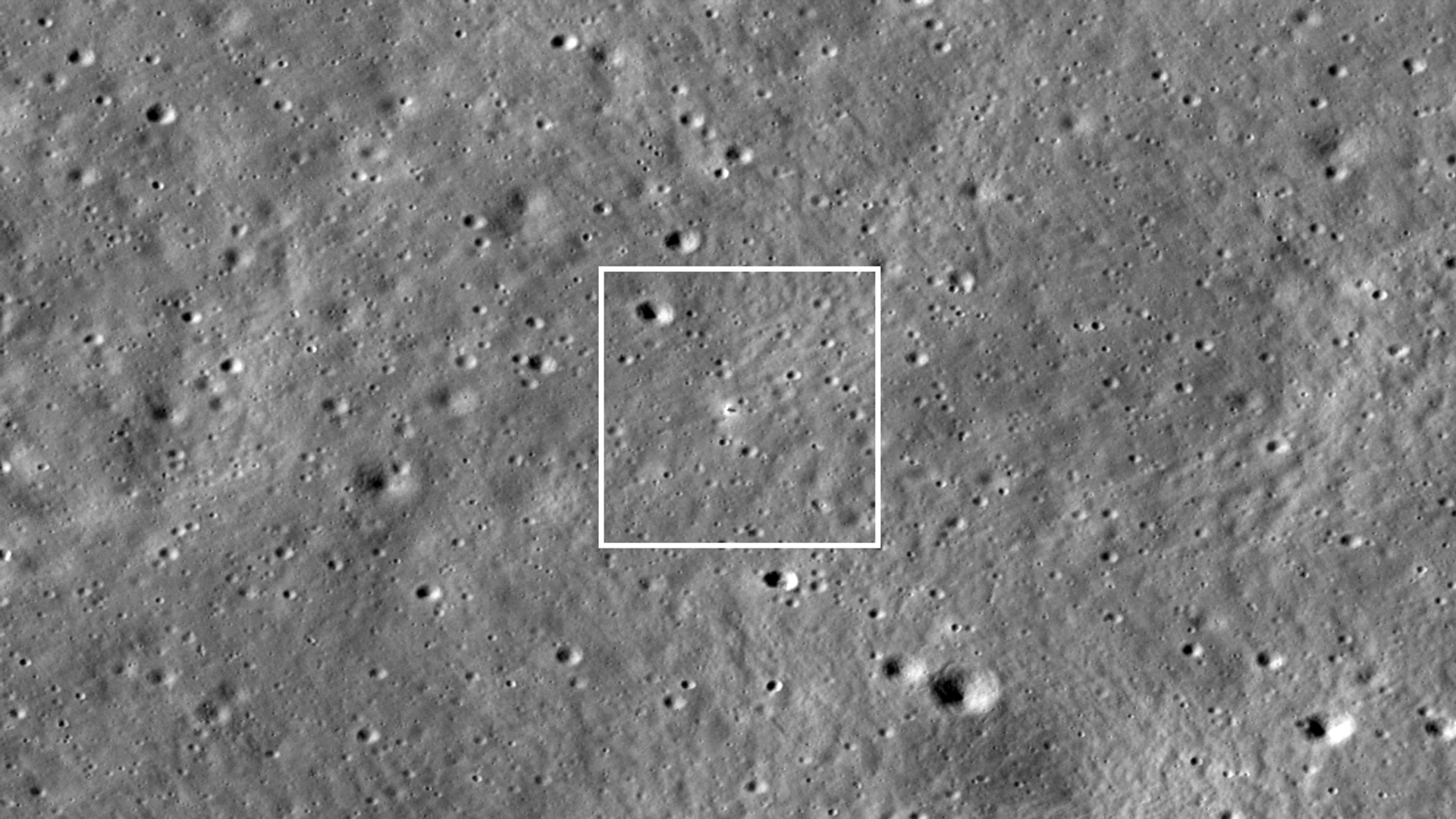https://sputnikglobe.com/20230920/nasas-breathtaking-image-reveals-lunar-south-poles-darkness-1113534954.html
NASA's Breathtaking Image Reveals Lunar South Pole's Darkness
NASA's Breathtaking Image Reveals Lunar South Pole's Darkness
Sputnik International
NASA's improved ShadowCam, equipped with cutting-edge technology, illuminates the mysteries of Shackleton Crater, unveiling potential water reservoirs in the Moon's shadowed depths.
2023-09-20T17:35+0000
2023-09-20T17:35+0000
2023-09-20T18:52+0000
beyond politics
shackleton crater
nasa
science & tech
society
https://cdn1.img.sputnikglobe.com/img/07e7/09/06/1113163267_0:240:1100:859_1920x0_80_0_0_581bb9e5c849d825f31a70fefdd18705.png
Nestled in the mountainous precincts of the lunar south pole lies the time-worn scar known as Shackleton Crater, maintaining temperatures below -173 °C. Due to the Moon's inclination angle, only the elevated ridges and peaks within this region bask in the Sun's illumination.A significant portion of this expanse remains veiled in shadow, forming what experts call “cold traps”— potential sanctuaries where water or ice may stay hidden from the Sun's direct exposure and elude the scrutiny of curious astronomers.With deft precision, NASA has ingeniously merged imagery from two separate cameras to unveil a flawless depiction of Shackleton Crater, shrouded in darkness for eons, now revealed in all its splendor.Chinese astronomers have set their sights on dispatching a compact aerial probe to the crater to extract evidence of lunar water ice three years from now. Meanwhile, NASA employs specialized 'night vision' apparatus to rummage into perennial darkness.With a sensitivity to light in shadowed areas that exceeds other lunar cameras by over 200-fold, ShadowCam stands as a technological marvel. It achieves this feat by harnessing “earthshine”—the light reflections from our planet illuminating the lunar surface.Additionally, the camera leverages the reflected sunlight from the lunar mountains and ridges. The ShadowCam team has implemented an innovative image mosaic method to rectify this issue.By interchanging the over-saturated, sunlit regions recorded by ShadowCam with images sourced from other lunar cameras in orbit, a level of detail emerges that is nothing short of breathtaking, providing a visual experience unlike any other.
shackleton crater
Sputnik International
feedback@sputniknews.com
+74956456601
MIA „Rossiya Segodnya“
2023
Chimauchem Nwosu
https://cdn1.img.sputnikglobe.com/img/07e7/09/01/1113046371_0:99:1536:1635_100x100_80_0_0_9c5c627283eca931c39fe4852bbb301c.jpg
Chimauchem Nwosu
https://cdn1.img.sputnikglobe.com/img/07e7/09/01/1113046371_0:99:1536:1635_100x100_80_0_0_9c5c627283eca931c39fe4852bbb301c.jpg
News
en_EN
Sputnik International
feedback@sputniknews.com
+74956456601
MIA „Rossiya Segodnya“
Sputnik International
feedback@sputniknews.com
+74956456601
MIA „Rossiya Segodnya“
Chimauchem Nwosu
https://cdn1.img.sputnikglobe.com/img/07e7/09/01/1113046371_0:99:1536:1635_100x100_80_0_0_9c5c627283eca931c39fe4852bbb301c.jpg
nasa, lunar crater, shackleton crater, lunar south pole, cold traps, shadowcam, compact aerial probe, lunar water ice, night vision apparatus, earthshine, technological marvel, image mosaic method, lunar cameras, terrain, geologic features, moon, chinese astronomers, sunlight, mountainous precincts, time-worn scar, inclined angle, temperatures, dark regions, light reflections, planet, ridges, peaks, shadows, imagery, satellite, visual map.
nasa, lunar crater, shackleton crater, lunar south pole, cold traps, shadowcam, compact aerial probe, lunar water ice, night vision apparatus, earthshine, technological marvel, image mosaic method, lunar cameras, terrain, geologic features, moon, chinese astronomers, sunlight, mountainous precincts, time-worn scar, inclined angle, temperatures, dark regions, light reflections, planet, ridges, peaks, shadows, imagery, satellite, visual map.
NASA's Breathtaking Image Reveals Lunar South Pole's Darkness
17:35 GMT 20.09.2023 (Updated: 18:52 GMT 20.09.2023) NASA's ShadowCam illuminates the mysteries of Shackleton Crater, unveiling potential water reservoirs in the Moon's shadowed depths.
Nestled in the mountainous precincts of the lunar south pole lies the time-worn scar known as Shackleton Crater, maintaining temperatures below -173 °C. Due to the Moon's inclination angle, only the elevated ridges and peaks within this region bask in the Sun's illumination.
A significant portion of this expanse remains veiled in shadow, forming what experts call “cold traps”— potential sanctuaries where water or ice may stay hidden from the Sun's direct exposure and elude the scrutiny of curious astronomers.
With deft precision, NASA has ingeniously merged imagery from two separate cameras to unveil a flawless depiction of Shackleton Crater, shrouded in darkness for eons, now revealed in all its splendor.
Chinese astronomers have set their sights on dispatching a compact aerial probe to the crater to extract evidence of lunar water ice three years from now. Meanwhile, NASA employs specialized 'night vision' apparatus to rummage into perennial darkness.
With a sensitivity to light in shadowed areas that exceeds other lunar cameras by over 200-fold, ShadowCam stands as a technological marvel. It achieves this feat by harnessing “earthshine”—the light reflections from our planet illuminating the lunar surface.
Additionally, the camera leverages the reflected sunlight from the lunar mountains and ridges. The ShadowCam team has implemented an innovative image mosaic method to rectify this issue.
By interchanging the over-saturated, sunlit regions recorded by ShadowCam with images sourced from other lunar cameras in orbit, a level of detail emerges that is nothing short of breathtaking, providing a visual experience unlike any other.
"With each camera optimized for specific lighting conditions found near the lunar poles, analysts can combine images from both instruments to create a comprehensive visual map of the terrain and geologic features of both the brightest and darkest parts of the Moon," NASA expressed.




